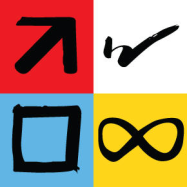Blog Rewind: We went back to our archives to bring you our most popular post form the old blog. here is a Q & A written by Ginny Whitelaw, titled "Coaching Clients on Physical Activities for the Patterns".
Q: How, in an actual coaching session, do you recommend physical activities for developing a pattern, beyond just looking over a list of them?
A: It’s a great question, and one that I invite other coaches to share their experience on as well. For in landing on the right practices by which our clients can cultivate this or that pattern, we make the patterns deeply personal for our clients, and HOW we do that is deeply personal for us as coaches. This is how I do it: start with exactly where the client is starting:
What are you interested in?
What do you love to do?
What renews you?
What did you used to make time for that you no longer do?
These are the sorts of questions I might ask. And then I listen deeply for whether they know what’s good for them or are they lost? In particular, is there something they name that could be done in the energy of the pattern they want to cultivate? And can we identify some strengths that will help them strengthen a weak pattern?
For example, one client, I’ll call her Margie, was a strong Driver and wanted to develop more Visionary. Other things I knew about Margie was she had a strong sense of responsibility (i.e., especially not letting others down), her health was starting to fail, and she was Driver-determined to “make war” (her words) on getting her life back. When I asked her about practices already in her life, she said she used to go to the gym and weightlift, but didn’t have time for it anymore – classic Driver! – but she knew she needed to get back to it. She also loved cooking, gardening, just being out in nature, but didn’t have time for those things either.
Already she had given me plenty of clues. We talked about converting her “make war” determination into committed time for a renewing practice. Using her Driver strength and sense of responsibility, I suggested keeping score (“Give yourself a point each day that you stick to your commitment, and set a target for, say, 70 points this quarter. Make a bet with a friend. If you don’t hit 70 points by end of the quarter, you owe her something you’ve agreed on.”)
Now that we had a wedge of time, how could Margie best fill it? She wanted to get back to weightlifting a couple times a week, and I told her that was great, but don’t expect that to develop the Visionary. It would be important renewal time for her, however, and would keep refreshing her “make war” determination, so I didn’t try to talk her out of it. “In addition,” I asked, and this is where the pattern activity lists come in, “Would you consider Tai Chi once a week? Done with a friend (whom she wouldn’t want to let down, of course!). In general, this is where in a coaching conversation I might bring out the lists. Do any of these speak to you? Which of these are you already doing? Which are you curious about?
As for Tai Chi and Margie, she said she would think about it, but in a way that made me think she’d do nothing more than think about it. But the seed was planted, I let it go. In the meantime, gardening was already a passion (and on the Visionary list); could she commit to an hour a week being one with her garden? And doing it in a sort of Visionary way – creating, making spaces, feeling into the nature of what wants to happen in a semi-shaded part of her yard? She was quite charged about this possibility, and I could hear it would have enough energy to get started. She also wanted to add a Visionary walk at lunch through a park near where she worked – a midday refresher that would also spark ideas for her own garden. Twenty minutes for her walks, an hour a week for her gardening, weightlifting twice a week, and a bet with a friend wrapped around all of it – a perfect starting practice for this Driver!
So there is a place for the lists – i.e., those development activities listed in the end of chapters in Move to Greatness, or in the Development Recommendations of a FEBI report – but I suggest not starting with them, but rather starting with where our client starts, listening for how we can build on strengths and current passions, and making connections to what we hear will resonate for him or her.
Not yet FEBI Certified? Learn more about becoming a FEBI Certified Coach and join the next Certification beginning February 27th, 2012.






